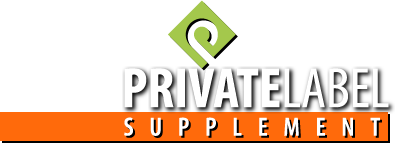
One of the major questions supplement retailers face on a regular basis is how to determine their marketing strategy. Which sources of information should you use? How can you find out what consumers are interested in and what is currently trending?
As part of our ongoing series of articles meant to assist private label supplement retailers in growing their brand, here’s a quick guide on how to use Google Trends to answer these questions.
#1 What is Google Trends Good For?
Google Trends is a free Google tool, which provides real-time information about the popularity of any search term on the web. While it is not an in-depth tool, it can still yield some very interesting results.
Google receives more than one billion search queries per day. Every single day. What Google Trends does is provide information about this vast flow of digital information. And within this flow, movements can be traced and analyzed. These movements can then eventually be used to make predictions. Consider, for example, how Google Trends was able to predict movements in the stock market.
So if Google Trends is able to help make predictions about the stock market, it might just as well be able to help supplement retailers figure out their marketing strategy. Before we explore this question further, let’s look at what Google Trends can offer in terms of data.
#2 What Kind of Data Does Google Trends Offer?
Since Google now has encrypted search terms and won’t let brands figure out which keywords are the ones that lead users to their website, using Google Trends is one way to get around this problem.
Google Trends offers the possibility to see whether and how much people are looking for something. While results don’t convey “absolute search term volume” (but rather relative), they are still quite helpful in providing you with a context from which to base your strategy.
Google Trends allows you to:
- Discover and compare trending search terms / keywords
- Monitor industry trends through relevant keywords
- Monitor your brand and/or competitors’ brand names
Working with the data you’ve gathered through Google Trends you can then:
- Discover new and hot supplement trends
- Reveal seasonal fluctuations in supplement trends
- Make forecasts based on real-time and historical search data
- Generate ideas for your website content
- Make use of current and popular news stories (Newsjacking)
These are only some of the ways you can use the power of Google Trends to your advantage. Consider the following industry examples to learn how to tap into the power of Trends, yourself.
#3 What Google Trends Has to Say About Supplements
Google Trends allows you to limit your search to a particular location (the ‘US’ in all of the examples below), a particular timeframe (‘2004 – present’ in the examples below), as well as to a particular variety of categories or types of web content.
- How to Target Your Search
When searching for a supplement or supplement category in Google Trends, you have to be aware of how Trends treats search queries. Searching for “weight loss supplements” with and without quotation marks on each end will yield different results.
Quotation marks will make Google Trends search for the exact search term. So if you’re searching with quotation marks, you will have to try out a number of terms to find the best one (consider singular and plural forms).
Without the quotation marks, Trends will display all results which include the terms in any particular order, as well as related results. This will generate significantly different graphs with regard to search volume and will help you compare the degrees of interest for a number of similar search terms. Like here:

Source: Google Trends
Notice also that Google Trends offers to display popular news headlines related to those searches (the letters which you can see on the graph), as well as make a forecast on how these search terms will develop (the dashed lines on the right).
You can include up to 5 search terms on one graph. But what you can do in addition to that is to create a grouping of terms. For example, one search query term or grouping could be: weight+loss+supplement. Alternatively, you could also try: “weight loss supplement”+”dietary supplement”.
What the ‘+’sign will do to any search query is to display results that contain the words weight OR loss OR supplement or, as in the second example, “weight loss supplement” OR “dietary supplement“. If you would like to exclude a particular search term that may be related to what you are looking for, you can use the ‘-‘ sign.
- Revealing Seasonality in Supplement Trends
Google Trends is very successful in revealing whether there is a seasonal pattern in consumer interest for a particular supplement. Firming cellulite creams are a great example of this.

Source: Google Trends
As is clearly evident, there is an almost uninterrupted seasonal pattern of interest in cellulite cream, with Nov/Dec being the lowest point and June/July the highest.
Why did we search for ‘cellulite cream’ rather than ‘firming cellulite cream’ or ‘anti-cellulite cream’? Because Google searches that yield the highest volume are usually also the simplest and most straightforward.
To you as a professional, ‘cellulite cream’ may sound like cream for cellulite rather than against it. But don’t let your knowledge confuse you on this one. If you search for “anti cellulite cream” and compare its graph to that of “cellulite cream”, you will see that it shows significantly fewer searches.
Which brings us to our next point.
- Regional Interest and Related Searches
Google Trends can also reveal the amount of regional interest for your search term. If, for example, the United States is your general search location and there is a high enough search term volume, Google Trends will offer you insight into where these searches originate from locally. Here’s how this looks for ‘cellulite cream’.

Source: Google Trends
Firstly, if you click on New York (as the origin of the highest search for this term), you will see a map of New York state that will reveal which parts of it search for ‘cellulite cream’ the most. Secondly, though not displayed in this screenshot, below the map there is an additional option to view animation for the ‘change over time’ for this region.

Source: Google Trends
Related search terms which you can see immediately underneath the ‘regional interest’ section are also a great source of information. Here, Google Trends will offer you a list of related search queries.
So, we can see that another popular search term is ‘best cellulite cream’. The rising tab, on the other hand, will offer you search terms which are currently growing.
If instead of a percentage you see ‘Breakout‘, this means that the search term grew over 5000% during the period and for the location you have determined.

Source: Google Trends
If you care to compare, though, you will still discover that ‘cellulite cream’ ranks the highest, when compared to all of these other search terms. Still, they are important because they effectively tell you a) what consumers are interested in, and b) how consumers are looking for what they are interested in.
This keyword data is highly relevant for your marketing strategy because you can use the most relevant and popular search terms when: writing content for your blog, optimizing your website, or using social media outlets. The regional interest and seasonal fluctuations, on the other hand, can tell you when and where to market.
- Riding the Wave
Google Trends can also help you when you need to readjust your marketing strategy or act quick. To ride the wave of a supplement that is about to lift off, you need to be aware of its existence and potential in the first place.
One such trend involved Garcinia Cambogia, when back in November 2012 sales of this supplement suddenly started growing and continue to do so even today. But two more recent and striking examples are Camu Camu and Corydalis. In January this year, both of these supplements grew suddenly and rapidly in popularity.

Source: Google Trends
The reason? A quick Google Search for these supplements reveals some interesting results. Already on the first page, among the first 5 results are two articles from January about these supplements. The source? The Dr. Oz blog. Coincidence? Hardly.
We’ve often recommended that you follow Dr. Oz closely and this is a perfect example of why we recommend it. Certainly there are more influences out there than Dr. Oz but we have often found that spikes in Google Trends correspond to particular instances when Dr. Oz presents a new supplement.
If you reinforce your marketing strategy by analyzing information from authoritative and leading industry figures and sources, you will be able to check and confirm emerging trends in Google Trends.
Here, too, you can use these trends to start blogging or tweeting about hot topics that will engage the online community.
#4 Google Trends: Your Marketing Strategy’s Best Friend
Private label supplement retailers can make good use of Google Trends when devising their marketing strategy. From content to social media, to website keyword optimization and even physical geo-targeting of advertising, Google Trends offers powerful data and insights for all of these.
In order to maximize the tool’s capabilities, all you need to do is spend enough time searching, comparing and analyzing the data which Trends will provide for you. If you are wondering whether the data is truly reliable, here are a number of great examples of Google Trends’ accuracy.
Private Label Supplement offers marketing solutions and services to help your supplement brand develop and expand. We can provide you with personalized insights for your brand and help you choose the best course of action. Call our sales team at 855-209-0225 ext. 2 or email us at sales@privatelabelsupplement.com to get started today.
All my best,
Stefani Thionnet
Stay focused and never give up!










